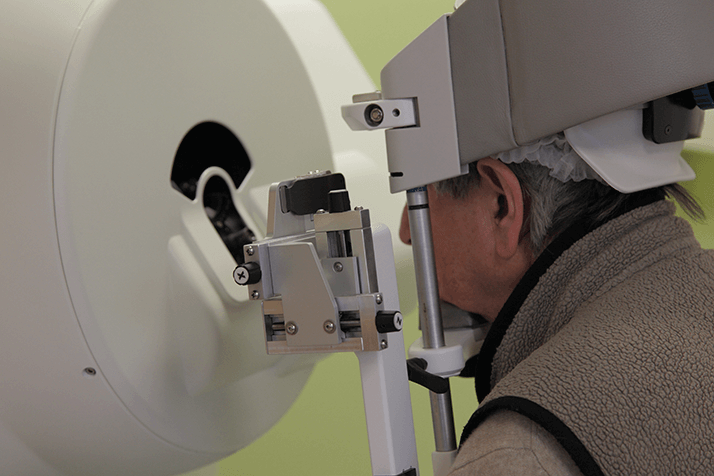
Oraya Therapeutics Inc., a privately-held company that produces a low-energy, stereotactic radiotherapy instrument, IRay, for the treatment of wet AMD, are to receive funding from Carl Zeiss Meditec (CZM) for “the implementation of its growth strategy over a period of up to two years”, according to a CZM press release (1). In return, CZM will receive share purchase rights – up to a majority stake – after this two-year period. The funding amount has not been divulged, but in discussing the transaction, Ludwin Monz, CZM’s CEO stated: “The current pharmaceutical treatment regimens for wet AMD are exceptionally costly and burdensome, and Oraya’s unique therapy offers a significant potential to positively impact the management of this debilitating disease.” Clearly, there’s value in the investment for CZM, but to discover what the deal means for Oraya Therapeutics, we spoke to it’s CEO, Jim Taylor.
Is this simply investment by CZM in your technology, or will it lead to something more? Zeiss is not an investment company. You’d assume that their interest is in the future of the technology. I spent eight years of my life within the Zeiss organization, so I know that they don’t do this type of thing without a long-term view.
How might both companies work together? This is not just a passive investment, there is a full intent, from both parties, to leverage our respective strengths and opportunities. From our standpoint, the impact of this is probably threefold. One: funding is nice. Two: the brand of Zeiss carries with it a presumption that people have taken a hard look at the science, the technology and the clinical value, and have determined that this is something that’s not just technically interesting, but also clinically meaningful. For us, I think it provides that type of imprimatur, if you will. Finally, three: the ability to leverage certain capabilities of both organizations, where it makes sense, for maximal effect. It’s more than just the funding that we benefit from.
Does part of “the implementation of Oraya’s growth strategy” include clinical trials? As a venture capital-funded company, we were essentially constraining our strategic operational interests to two primary markets: the UK and Germany, with a little bit of outreach in Switzerland. Clearly this agreement with Zeiss gives us a chance to see if a broader commercial strategy makes sense. There are similar types of discussions, and some of those may involve clinical trials that we have on the slidelines, that we may or may not desire to do – and some of them are not particularly expensive to do, frankly. So I think all of those things are possible. The first step is to get the basics of the agreement done, then sit down and discuss how to make this as mutually successful as possible. It’s an exciting time for us, and we think it’s an exciting time for them.
References
- Press release: Ad Hoc Announcement Pursuant to 15 WpHG, “Carl Zeiss Meditec invests in innovative radiotherapy solution for wet age- related macular degeneration”, bit.ly/CZMORAYA. Accessed 5th January 2015.
